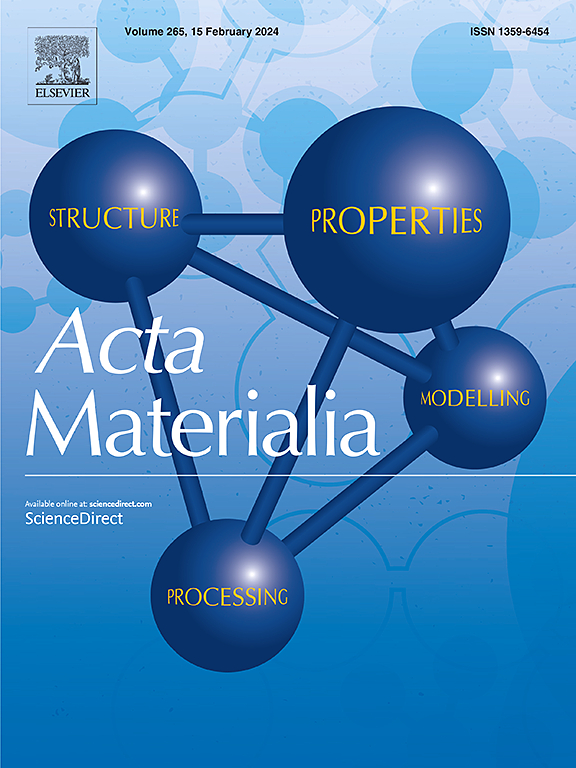Damage and self-healing mechanisms of 2D SiCf/SiC composites during high-temperature low-cycle fatigue in air: A combined in-situ acoustic emission and microscopy study
IF 8.3
1区 材料科学
Q1 MATERIALS SCIENCE, MULTIDISCIPLINARY
引用次数: 0
Abstract
The fatigue behavior and the corresponding damage mechanism under near-service environment are critical for the engineering applications of SiCf/SiC composites. In this work, a combined in-situ acoustic emission (AE) and microscopy method was applied to investigate the high-temperature fatigue damage mechanisms above the tensile proportional limit stress of SiCf/SiC composites. The fatigue damage modes at 1350 °C in air were identified and the AE signals could be effectively divided according to five types of damage events. Combined with the microstructure analysis, the damage and failure mechanisms of composites under different maximum stress levels were elucidated, which were dominated by the competition between matrix cracking and crack self-healing. When the maximum stress was low (100 MPa), the cracks in the chemical vapor infiltration (CVI) SiC matrix could be quickly healed at 1350 °C. The specimen achieved fatigue run-out (105 cycles) without failure, and the retention rate of ultimate tensile strength (UTS) and failure strain were 76.8 % and 51.2 %, respectively. The decrease in UTS was attributed to interfacial sliding reduction and fiber grain coarsening. The decrease in failure strain was mainly ascribed to the irreversible damage caused by matrix cracking and interfacial sliding. When the maximum stress was high (120–140 MPa), the crack opening displacement for the CVI-SiC matrix was so large that cracks could not be healed, and the fatigue failure was controlled by fiber oxidation degradation. This work is of great significance for a deep understanding of the fatigue behavior of SiCf/SiC composites under near-service environment.


二维SiCf/SiC复合材料在空气高温低周疲劳中的损伤和自愈机制:原位声发射和显微相结合的研究
近服役环境下SiCf/SiC复合材料的疲劳行为及其损伤机理对其工程应用至关重要。本文采用原位声发射(AE)和显微相结合的方法研究了SiCf/SiC复合材料在拉伸比例极限应力以上的高温疲劳损伤机制。识别了1350℃空气环境下的疲劳损伤模式,并将声发射信号有效地划分为5类损伤事件。结合微观组织分析,阐明了复合材料在不同最大应力水平下的损伤破坏机制,其中以基体开裂和裂纹自愈竞争为主。当最大应力较低(100 MPa)时,在1350℃下,CVI SiC基体的裂纹可以快速愈合。试验结果表明,试样在105次循环中均无失效,极限抗拉强度和失效应变的保留率分别为76.8%和51.2%。UTS的降低是由于界面滑动减少和纤维晶粒粗化。破坏应变的减小主要是由于基体开裂和界面滑动引起的不可逆损伤。当最大应力较高(120 ~ 140 MPa)时,CVI-SiC基体裂纹张开位移过大,裂纹无法愈合,疲劳破坏受纤维氧化降解控制。这项工作对于深入了解SiCf/SiC复合材料在近服役环境下的疲劳行为具有重要意义。
本文章由计算机程序翻译,如有差异,请以英文原文为准。
求助全文
约1分钟内获得全文
求助全文
来源期刊

Acta Materialia
工程技术-材料科学:综合
CiteScore
16.10
自引率
8.50%
发文量
801
审稿时长
53 days
期刊介绍:
Acta Materialia serves as a platform for publishing full-length, original papers and commissioned overviews that contribute to a profound understanding of the correlation between the processing, structure, and properties of inorganic materials. The journal seeks papers with high impact potential or those that significantly propel the field forward. The scope includes the atomic and molecular arrangements, chemical and electronic structures, and microstructure of materials, focusing on their mechanical or functional behavior across all length scales, including nanostructures.
 求助内容:
求助内容: 应助结果提醒方式:
应助结果提醒方式:


